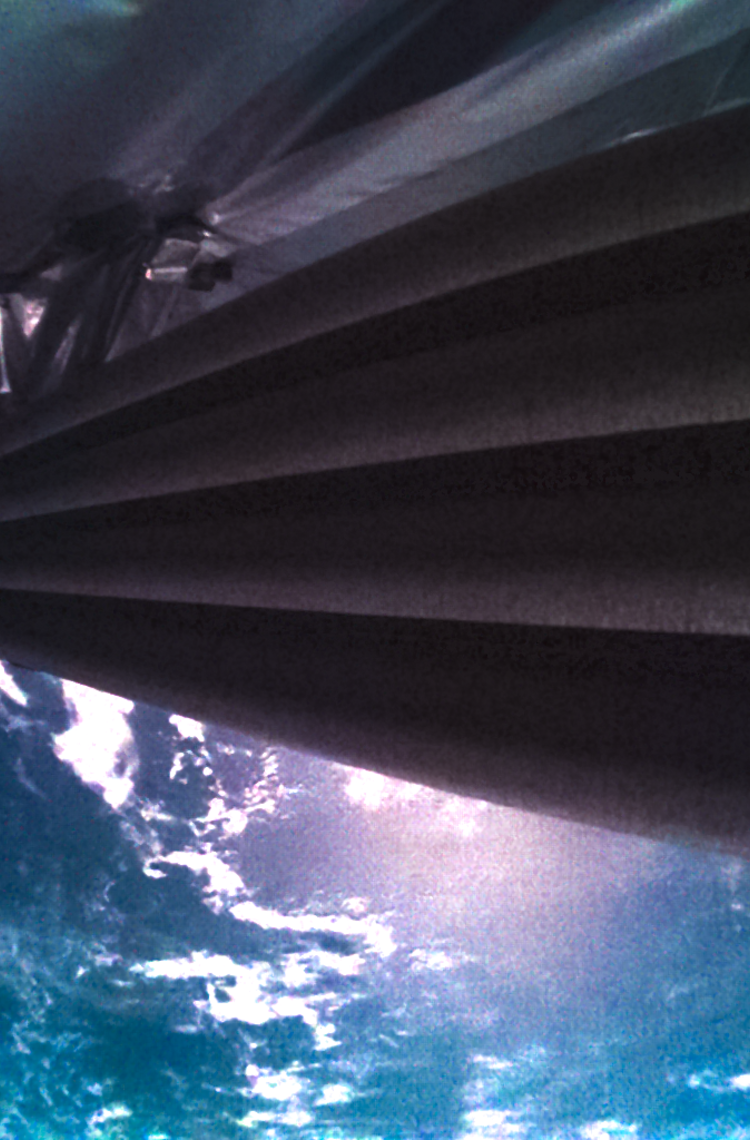As we commemorate a year since the launch of the Jupiter Icy Moons Explorer (JUICE), we revisit a pivotal moment in space exploration history when the mission encountered a formidable challenge just days after lift-off with the RIME antenna on ESA’s JUICE failing to deploy. Through perseverance, ingenuity, and collaborative spirit, discover how the engineering teams from Airbus, ESA, and SpaceTech overcame adversity to unlock the secrets of Jupiter´s mysterious icy moons.
Solving the RIME deployment mystery, success through collective intelligence
In April 2023, JUICE began an approximately 8 year cruise to Jupiter to spend four years around the planet.
The RIME antenna with its radar is a key instrument for the JUICE mission. Its radar signals will penetrate Jupiter's moons to a depth of 9 km, and reveal details of between 50 and 140 m across. This will provide unique data to understand the habitability of these icy moons.
At 16 m in length, the RIME antenna was too long to fit inside the nose cone of the Ariane 5 rocket. It was therefore constructed in two booms of four deployed segments each. For the launch, three deployable segments on each side were folded back and held in place by two brackets.
Once in space, devices called non-explosive actuators (NEAs) were remotely activated from the European Space Operations Centre (ESOC), Darmstadt, Germany. Each NEA was set to remove a holding pin from its bracket, allowing that section to spring into place.
And that’s where the problems began.
17 April 2023, three days after the launch: deployment begins
The first step went without a hitch: the camera and on board accelerometers witnessed the first segment deployment. The command was given to fire the second actuator. It took a few seconds to download the camera image which showed that the boom segment was still clearly visible in its stowed configuration. The deployment had failed.
“We knew that we had to quickly try to understand what had happened, and then try to find a workaround,” says Frédéric Faye, Airbus’s chief engineer for Juice.
The next morning, with the disbelief banished from their minds, the teams set to solving the mystery. They knew they had to find some way to free the stuck segment, but without compromising the deployment of the other segments, or indeed the rest of the spacecraft.
A first idea: “effect of the cold” or even “ice on the pin”
At the time of firing the second actuator, the bracket was at -80°C, so the first thoughts were that perhaps a thermoelastic effect had led to some shrinkage, or maybe some ice had formed on the pin holding the segment in place. Since there are no heaters on the spacecraft near the support brackets of the RIME antenna, removing the ice would mean rotating the spacecraft so that the antenna faced the Sun. But, the surface of the spacecraft holding the RIME antenna was designed to be a ‘cold face’.
After several days of study, the team began gradually slewing the spacecraft so that the surface was illuminated. Unfortunately, the slew and associated warming up did not succeed in releasing the antenna, thus eliminating the ice formation as the root cause.
A second scenario: a stuck pin
The second hypothesis was that the pin had simply stuck due to a mechanical effect more than a temperature effect. Then perhaps shaking the spacecraft would jog it loose. The stuck pin probably only needed moving by a millimetre or two, but they could not risk harming anything else with a violent jolt of the spacecraft. So, they began testing this manoeuvre cautiously : defining a train of thruster pulse specifically timed to excite the RIME antenna and nothing else. After several thruster firings the teams only saw small movements within the bracket.
A new recovery plan: closeby shock
The manufacturer of the antenna, SpaceTech, managed to reproduce the anomaly with a model of the antenna that had been used for testing and confirmed that the firing of the closest NEA usually managed to dislodge the stuck pin. It was also identified that to increase the chances of a successful outcome, the antenna should be heated by exposure to sunlight.
“We did eight slews over two weeks to illuminate the RIME bracket,” says Angela Dietz, ESA Spacecraft Operations Manager at ESOC. Each time they exposed the surface for longer, to understand the limits of this operation. By the end they felt comfortable exposing the surface for 73 minutes at a time.
It was now several weeks since the anomaly had occurred and the pressure was building up. The mission had a timetable to keep. “To me this was the most complicated thing during the recovery,” says Guillaume Chambon, in charge of managing the Airbus side of the recovery. “You have to be fast enough to act because everyone is expecting you to make progress, but you need to take enough time to consider all the side effects of what you are proposing,” he says.
Think twice before taking action
One afternoon, while contemplating the rescue attempt, Guillaume did indeed realise a potential problem. If they went ahead with the nominal deployment sequence, there was a chance that two segments of the antenna could collide.
So, the teams agreed to reorder the deployment sequence, and the recovery attempts began. First, the spacecraft was heated to drive off any ice, but the antenna remained fixed. And so it became obvious that the only possibility to recover the antenna was to heat the antenna again, and then continue with the deployment in the hope that the shocks from the other NEAs would unjam the pin.
It was all or nothing
Following the longest spacecraft slew, the bracket had been in sunlight for its maximum permitted time that day of 73 minutes, the spacecraft was rotated back, moving the antenna away from the Sun to avoid large thermal gradients and the teams began their final attempt. The command was sent and the first telemetry was positive, but they had to wait long minutes for the visual confirmation: Total success: the first three segments of the antenna were finally deployed!
But the job was not over yet. One other NEA still needed to be fired to deploy the second boom. It was at this point that Cyril Cavel, the JUICE project manager for Airbus found himself thinking about the scientists who were depending on them. Some had even been working on the antenna for decades. “The RIME antenna was an industrial delivery to these people. Without this antenna, the radar experiment would be either very reduced or even worthless,” he says.
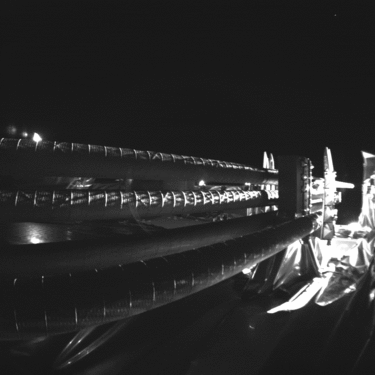
For the best chance of success on release of the next bracket there was a further wait. “Those three to four hours were very long,” says Frédéric.
When the conditions were right, the command was sent and finally, the cameras confirmed the teams’ victory. RIME was now in its fully deployed configuration.
A success made possible thanks to the commitment and ingenuity of the RIME anomaly teams at ESA, Airbus and SpaceTech. The JUICE mission is now one-year into its 8-year journey to Jupiter, ready for science and exploration of new frontiers.
Latest News
Continue Reading
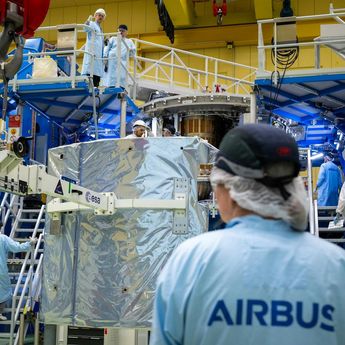
Airbus ships fourth European Service Module for Artemis IV
Press Release
Space
Fourth European Service Module (ESM-4) is ready to leave Airbus’ facilities in Bremen, Germany, and be shipped to NASA’s Kennedy Space Center, Florida, USA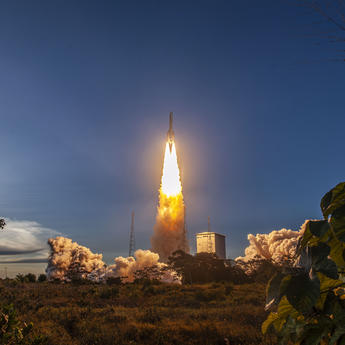
Sentinel-1D: the radar that never sleeps
Web Story
Space
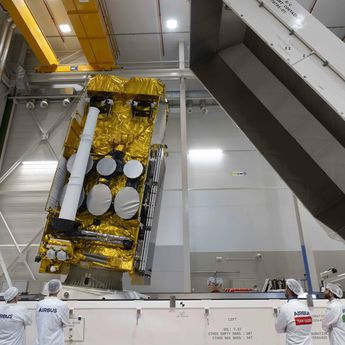
Airbus-built SpainSat NG-II secure communications satellite successfully launched
Press Release
Space

Airbus, Leonardo and Thales sign Memorandum of Understanding to create a leading…
Press Release
Company

Tracking air pollution from space
Web Story
Space
